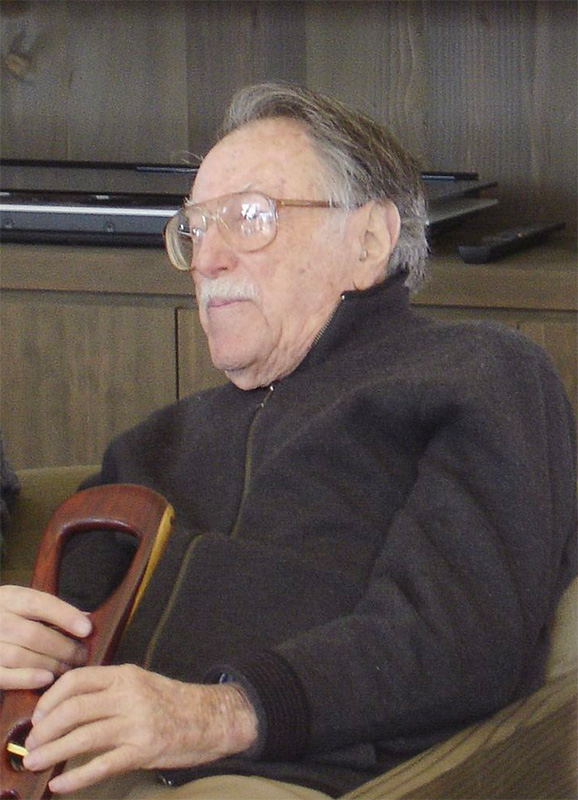Julius Shulman was an American architectural photographer best known for his photograph
Case Study House #22, Los Angeles, 1960. Pierre Koenig, Architect. The house is also known as the
Stahl House. Shulman's photography spread the aesthetic of California's Mid-century modern architecture around the world. Through his many books, exhibits, and personal appearances his work ushered in a new appreciation for the movement beginning in the 1990s.
His vast library of images currently resides at the
Getty Center in Los Angeles. His contemporaries include
Ezra Stoller and
Hedrich Blessing photographers. In 1947, Julius Shulman asked architect
Raphael Soriano to build a mid-century steel home and studio in the Hollywood Hills.
Some of his architectural photographs, like the iconic shots of
Frank Lloyd Wright's or
Pierre Koenig's remarkable structures, have been published countless times. The brilliance of buildings like those by
Charles Eames, as well as those of his close friends,
Richard Neutra and
Raphael Soriano, was first brought to wider attention by Shulman's photography. The clarity of his work added to the idea that architectural photography be considered as an independent art form in which perception and understanding for the buildings and their place in the landscape informs the photograph.
Many of the buildings photographed by Shulman have since been demolished or re-purposed, lending to the popularity of his images.
I’m not modest about myself. I know for a fact that I am good. But good in the sense that I can put things together. I expound vociferously to students of architecture and photography, the significance of design. A photograph is a design in which you assemble thoughts in your mind. -- Julius Shulman
Julius Shulman was born in Brooklyn to Russian-Jewish parents on October 10, 1910, and grew up on a small farm in Connecticut before moving to Los Angeles while still a boy. He briefly attended the University of California, Los Angeles and the University of California, Berkeley, and earned pocket money by selling his photographs to fellow students. In 1936 he returned to Los Angeles, where he was enlisted by a friend, working as a draftsman for Richard Neutra, to take photographs of a new, Neutra-designed Kun Residence in Hollywood with his amateur Kodak Vest Pocket camera. When Neutra saw the pictures, he asked to meet the photographer and proceeded to give him his first assignments which assisted Shulman in launching his career in architectural photography. Shulman opened a studio in Los Angeles in 1950, by that time drawing much of his work from magazines based in New York. He remained in business full-time until the late 1980s. In 2000, Shulman gave up retirement to begin working with business partner
Juergen Nogai.
The Getty Research Institute held a 2005–2006 exhibition of Shulman's prints entitled
Julius Shulman, Modernity and the Metropolis. The exhibition included sections entitled
Framing the California Lifestyle,
Promoting the Power of Modern Architecture,
The Tools of an Innovator and
The Development of a Metropolis. The exhibition traveled to the
National Building Museum and to the
Art Institute of Chicago.
In 1987, the Shulman House was designated a
Cultural Heritage Monument by the city of Los Angeles. Shulman himself had a Golden Palm Star on the Palm Springs Walk of Stars dedicated to him in 2006. He died at his home in Los Angeles, California on July 15, 2009; he was 98 years old. He was buried at Hillside Memorial Park Cemetery in Culver City, California.
Source: Wikipedia
I sell architecture better and more directly and more vividly than the architect does... The average architect is stupid. He doesn’t know how to sell. He’s not a merchandiser. He doesn’t know how to express his own image. He doesn’t know how to create a design of his image... And I do it. I’ve done it all my career over half a century, and it gets better. -- Julius Shulman
